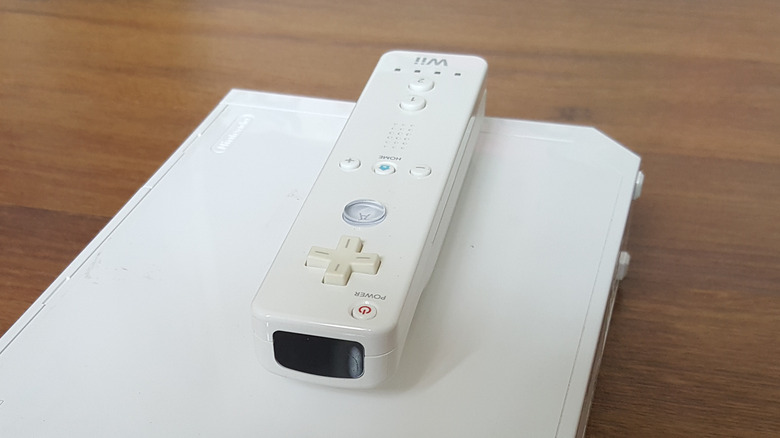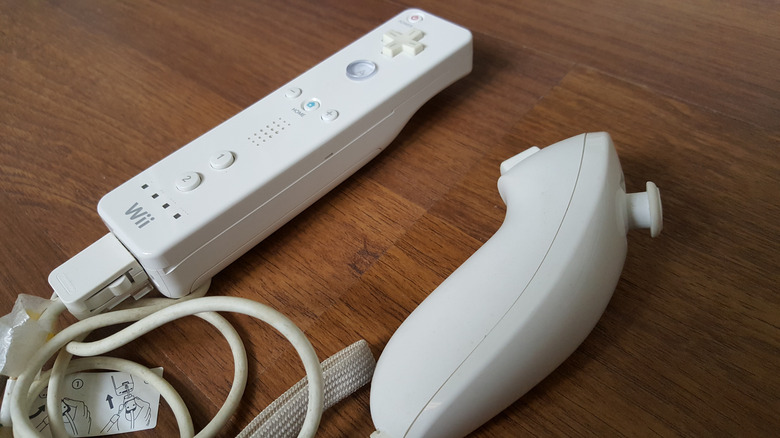The Innovative Wii Remote Feature You Probably Never Used
Anyone who's been a gamer for long enough remembers "the waggling years," the period in the seventh generation of video game consoles in which everyone wanted to make motion controls happen. Naturally, this race toward motion control supremacy was sparked off by Nintendo and its motion-powered Nintendo Wii. While the Wii Remote wasn't the first motion-powered game controller in history, it was the first to be used as a console's primary form of input, pointing at the screen with its sensor and measuring movement with its accelerometer.
The Wii Remote was crammed full of proprietary tech, but there were elements of the tech that, at least compared to the obvious stuff like the sensor and accelerometer, went largely by the wayside. From optional add-ons to internal secrets, the Wii Remote was truly a device of hidden depths. Perhaps one of the most mysterious of the Wii Remote's secrets, though, was its teeny, tiny onboard data storage.
6 KB of potential
Inside of every Wii Remote sits a 16 KB EEPROM chip; 10 KB of that storage was dedicated to the function of the Wii Remote, including stuff like saved calibration preferences and connection data for peripherals like the Nunchuk. However, 6 KB of that storage was non-volatile, which means it wasn't spoken for. If a game developer felt so inclined, it could make use of that data in tandem with its games. Of course, 6 KB of data was almost nothing by that generation's standards, so developers weren't exactly flush with opportunity. As such, the vast majority of the Wii's library disregarded the feature.
However, there were a handful of games that actually made use of those 6 KB. The primary usage of that extra storage space was transporting user profiles and preferences. For instance, you could save Mii avatars to your Wii Remote and use them as profiles on a different Wii console, instead of having to remake your Mii from scratch.
In "Super Smash Bros. Brawl," you could save controller preferences to your Wii Remote and use them right away on another copy of the game. Perhaps the most elaborate usage of the internal memory was in "Pokémon Battle Revolution," wherein you could save your personal Battle Pass containing the data on your trainer's name, outfit, phrases, and registered Pokémon. It wasn't the most useful feature, especially in the online age, but it was still a nifty allocation of physical resources on the part of game developers.

